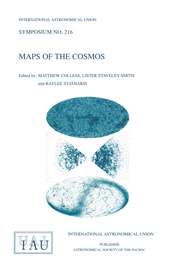Article contents
Two Recent Developments Concerning the Monte Carlo Method
Published online by Cambridge University Press: 14 August 2015
Abstract
This paper consists of two independent parts.
(1) The Monte Carlo method for computing the evolution of spherical stellar systems has been modified so that the computation can be continued after the time of formation of the central singularity. Results are presented for systems with equal and unequal star masses. The initial core-halo formation is followed by a general expansion of the cluster, while the central singularity absorbs a growing fraction of the total negative energy.
(2) Theoretical expressions of the ‘diffusion coefficients’, which describe the effect of encounters in a stellar system, contain a factor In(γN) where N is the number of stars and γ is a constant usually taken to be of the order of 0.4. A reconsideration of the ‘non-dominant terms’ leads to a substantially lower value, of the order of 0.15 for equal masses and 0.075 for unequal masses with a typical distribution. This correction improves the agreement between N-body and Monte Carlo simulations of spherical systems.
- Type
- Part I/Spherical Systems
- Information
- Symposium - International Astronomical Union , Volume 69: Dynamics of Stellar Systems , 1975 , pp. 133 - 149
- Copyright
- Copyright © Reidel 1975
References
- 13
- Cited by


